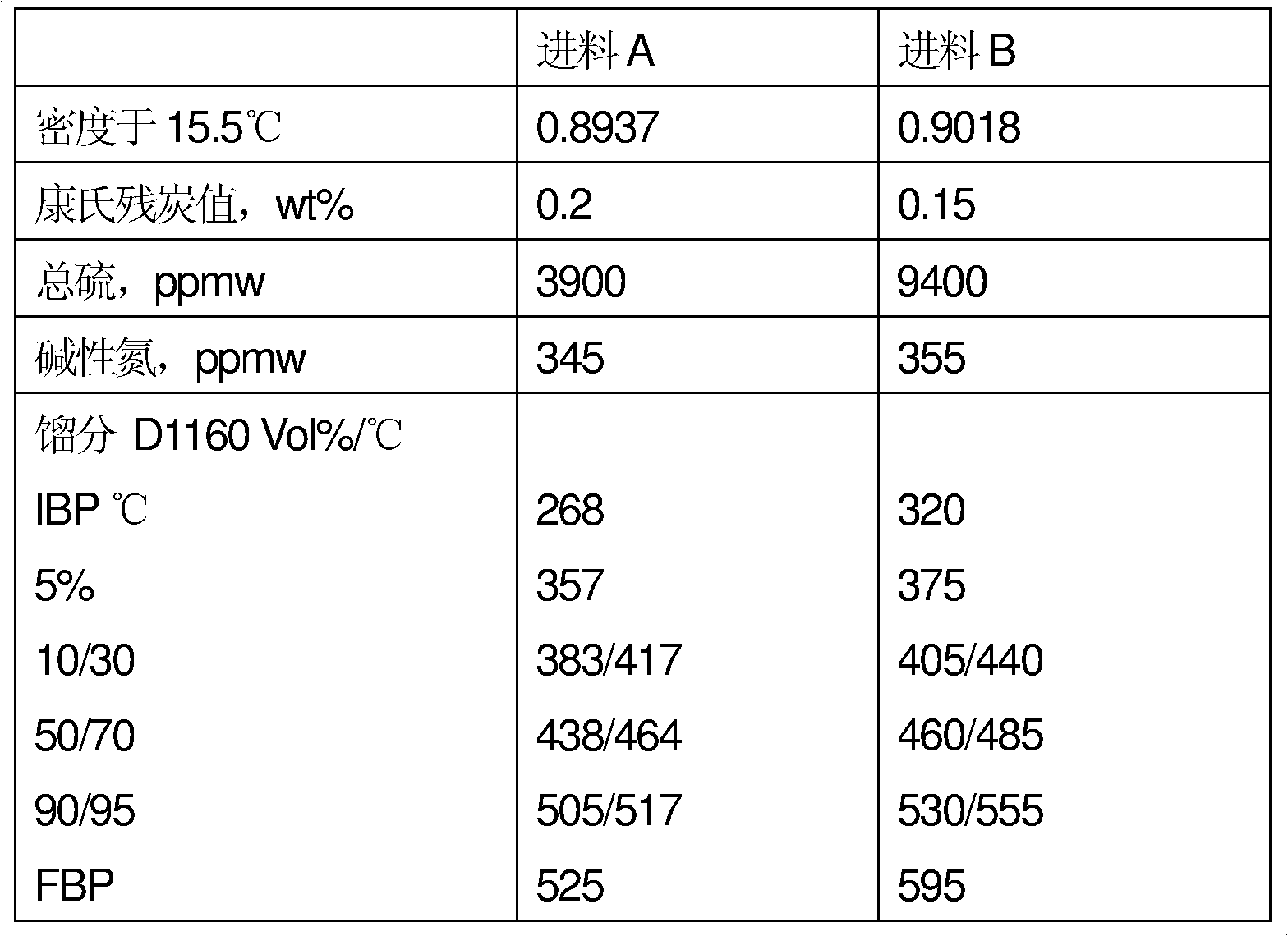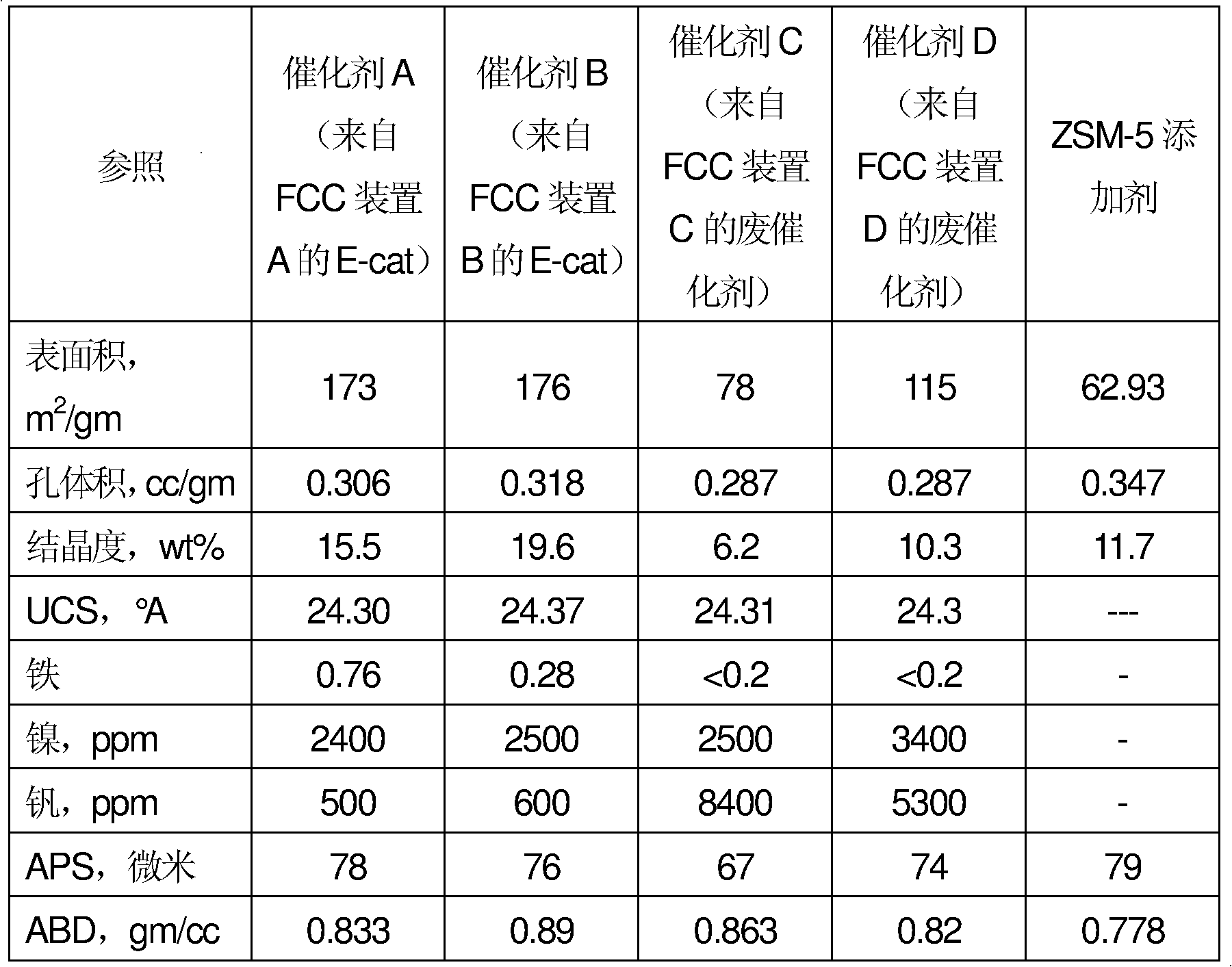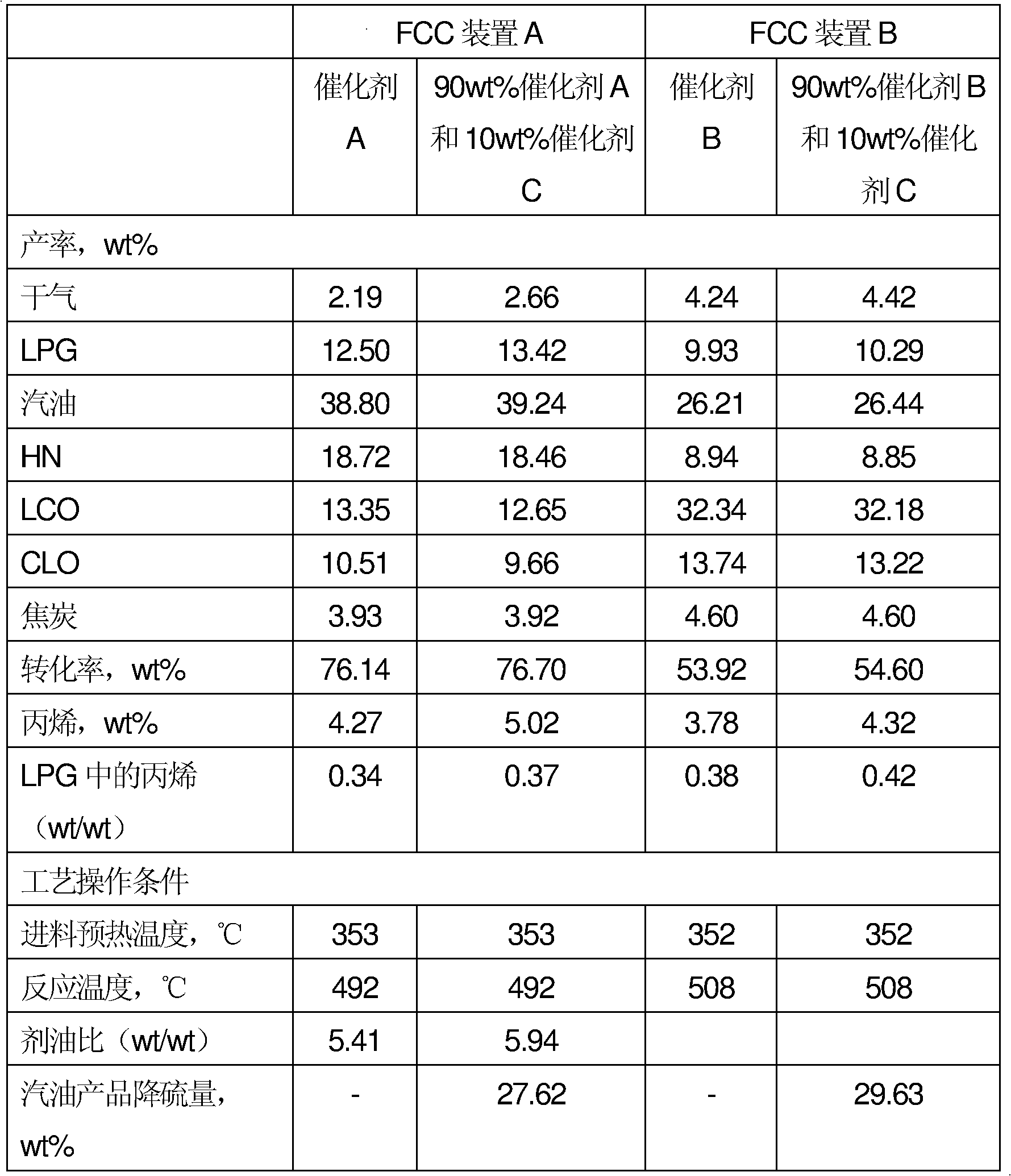A fluidized catalytic cracking process
A fluid catalytic cracking, catalyst technology, applied in catalytic cracking, cracking, chemical instruments and methods, etc.
- Summary
- Abstract
- Description
- Claims
- Application Information
AI Technical Summary
Problems solved by technology
Method used
Image
Examples
Embodiment 1
[0085] Effect of External Heavy Metal Poisoned Spent Catalyst in FCC Unit Operation
[0086] A spent catalyst poisoned with heavy metals from outside the FCC unit - Catalyst C was directly used to test its effectiveness in FCC unit A operation. The catalyst used in this experiment contained 90 wt% catalyst A, E-cat from FCC unit A and 10 wt% heavy metal poisoned spent catalyst C from FCC unit C. The results of experiments using feed A in a fluidized ACE-based unit are shown in Table 3.
[0087] Here it can be clearly seen that the use of 10 wt% external heavy metal poisoned spent catalyst increases both the conversion and the yield of LPG and propylene. The gasoline sulfur content was found to be reduced by 27.62 wt%.
[0088] An additional experimental item was aimed at retesting the effect of external heavy metal poisoned spent catalyst in another FCC unit B operation with corresponding E-cat and feed. Therefore, the catalyst used in this experiment contained 90 wt% Catal...
Embodiment 2
[0094] Heavy metal poisoned spent catalyst from outside the FCC unit was directly used to test its effectiveness in FCC unit operation. The catalyst used in this experiment contained a mixture of 60 wt% of the equilibrium catalyst with concentrations of 3500 and 7000 ppm of nickel and vanadium, and 40 wt% of heavy metal poisoned spent catalyst with concentrations of 3400 and 7000 ppm, respectively. 9000ppm nickel and vanadium. The results of experiments using Feed A in a fluidized ACE-based unit are shown in Table 4.
[0095] It is evident from the data that the conversion of the combined cycle catalyst obtained after adding the heavy metal poisoned spent catalyst to the equilibrium catalyst is 75.08 wt%. It is also evident that even after increasing the vanadium concentration, the activity of the catalyst is not affected. LPG yield % showed an increasing trend.
[0096] Table 4
[0097]
Embodiment 3
[0099] Heavy metal poisoned spent catalyst from outside the FCC unit was directly used to test its effectiveness in FCC unit operation. The catalyst used in this experiment contained a mixture of 70 wt% of the equilibrium catalyst (E-cat) and 30 wt% of the spent catalyst poisoned by heavy metals, wherein the equilibrium catalyst had nickel and vanadium concentrations of 3000 and 12000 ppm, respectively, and the spent catalyst poisoned by heavy metals had The concentrations were 3000 and 20000 ppm nickel and vanadium, respectively. Experimental results using feed A in a fluidized ACE-based unit are shown in Table 5.
[0100] It is evident from the data that the conversion of the recycled catalyst obtained after adding the spent catalyst to the equilibrium catalyst is 63.05 wt%. It is also evident that even after increasing the vanadium concentration, the activity of the catalyst is not affected. LPG yield % showed an increasing trend.
[0101] table 5
[0102]
PUM
| Property | Measurement | Unit |
|---|---|---|
| particle diameter | aaaaa | aaaaa |
Abstract
Description
Claims
Application Information
 Login to View More
Login to View More - R&D
- Intellectual Property
- Life Sciences
- Materials
- Tech Scout
- Unparalleled Data Quality
- Higher Quality Content
- 60% Fewer Hallucinations
Browse by: Latest US Patents, China's latest patents, Technical Efficacy Thesaurus, Application Domain, Technology Topic, Popular Technical Reports.
© 2025 PatSnap. All rights reserved.Legal|Privacy policy|Modern Slavery Act Transparency Statement|Sitemap|About US| Contact US: help@patsnap.com



